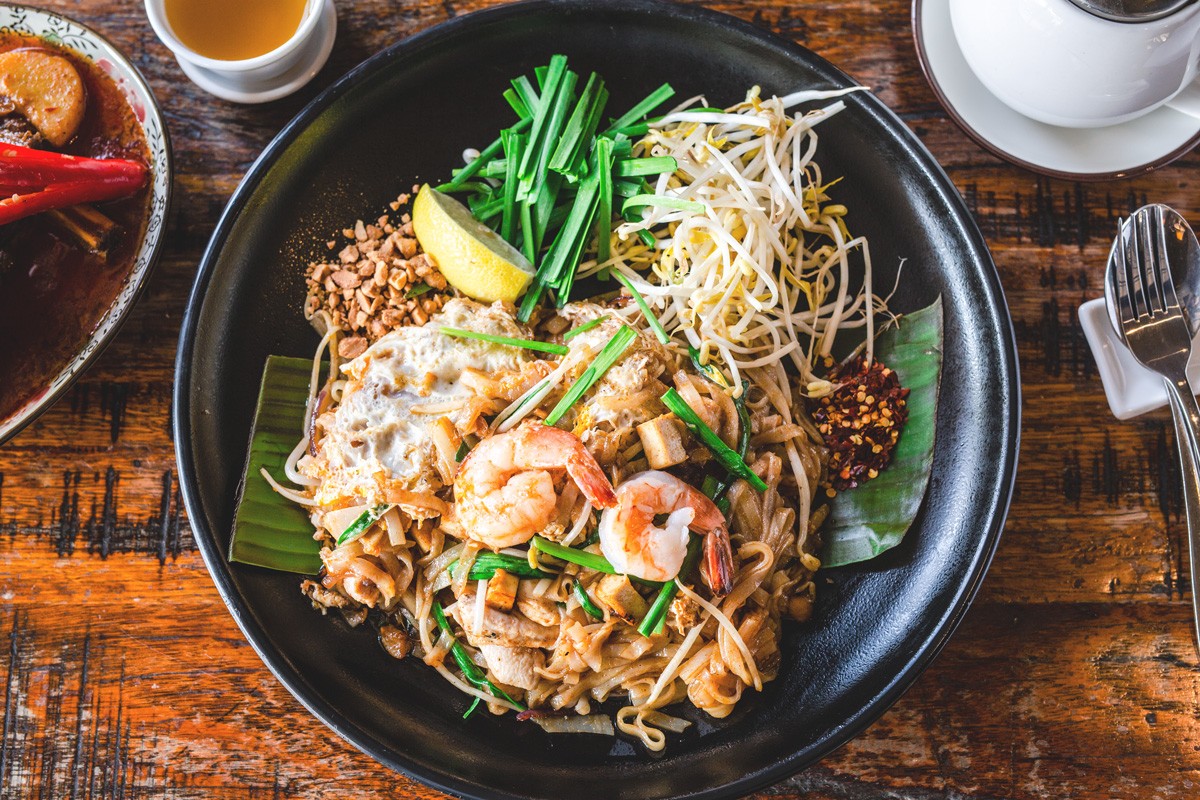
The Delicious Story Behind Thailand’s Most Famous Noodle — Pad Thai
LoveFoodReadyMeals – Pad Thai is more than just a meal; it’s a symbol of Thailand’s culture, creativity, and culinary pride. Found in bustling street markets, cozy cafés, and high-end restaurants around the world, PadThai represents the perfect harmony of sweet, sour, salty, and spicy flavors. But beyond its irresistible taste lies a fascinating history — one that blends tradition, national identity, and global influence.
The Origins of Pad Thai: A Nation in Transformation
Pad Thai’s story begins in the 1930s and 1940s, during a time of great change in Thailand. Under Prime Minister Plaek Phibunsongkhram, the country was undergoing modernization and nation-building efforts. One of his goals was to strengthen Thailand’s national identity — and food became part of that mission.
During World War II, Thailand faced a shortage of rice, its most essential food staple. To encourage people to consume less rice, the government promoted noodles made from rice flour as an alternative. Thus, a new dish was born — a stir-fried noodle that would eventually become Pad Thai.
The recipe blended local ingredients with Chinese-style cooking techniques, reflecting Thailand’s history as a crossroads of Asian cultures. Over time, it evolved into a uniquely Thai dish — light, flavorful, and balanced in every bite.
“Read More : Death Toll from 6.9 Magnitude Earthquake in the Philippines Rises to 19”
What Makes Pad Thai So Irresistible
Pad Thai is famous for its perfect balance of four key flavors: sweet, salty, sour, and spicy. This balance is achieved through a combination of simple yet bold ingredients.
Traditional Pad Thai starts with thin rice noodles stir-fried with tamarind paste, fish sauce, palm sugar, and chili powder. The dish is enriched with egg, tofu, and bean sprouts, while shrimp, chicken, or tofu serve as the main protein.
It’s then topped with crushed peanuts, lime wedges, and fresh cilantro, giving it a crunchy texture and a burst of freshness. Each ingredient has a purpose — creating a dish that’s as complex as it is comforting.
In Thailand, every street vendor and restaurant has its own twist on the recipe. Some make it sweeter, others spicier, but the goal is always the same: to achieve perfect balance.
From Street Food to Global Icon
Pad Thai began as an everyday meal sold by street vendors on bicycles. Over the decades, it grew into a culinary symbol of Thailand. By the 1970s, as tourism in Thailand exploded, visitors fell in love with the dish’s bold yet approachable flavors.
Today, Pad Thai is served everywhere — from Bangkok’s night markets to Michelin-starred restaurants in New York, London, and Tokyo. It has become one of Thailand’s most recognizable exports, joining the ranks of global favorites like sushi and pizza.
Even with its global fame, Pad Thai remains a source of national pride. For many Thais, it’s a reminder of how their country transformed a period of hardship into something delicious and enduring.
The Philosophy Behind the Flavor
Pad Thai is not just about ingredients — it’s about balance and mindfulness, both essential principles in Thai culture. Each element represents harmony: the heat of chili, the sourness of lime, the sweetness of palm sugar, and the saltiness of fish sauce.
This philosophy reflects Thailand’s broader approach to life — finding equilibrium between chaos and calm, tradition and modernity, individuality and community.
It’s no wonder that cooking Pad Thai feels almost meditative. The sizzling sound of noodles in a hot wok, the aroma of tamarind, and the final squeeze of lime all work together like a culinary symphony.
“Read More : Japanese Chicken Katsu: The Crispy Cutlet That Defines Comfort Food”
Pad Thai Today: A Dish That Unites Generations
In modern Thailand, Pad Thai continues to evolve. Chefs experiment with new versions — from lobster Pad Thai in luxury restaurants to vegan and gluten-free options for health-conscious diners. Yet, the essence of the dish remains unchanged.
For locals, Pad Thai is comfort food — something that reminds them of home. For travelers, it’s often their first introduction to Thai cuisine. And for the world, it’s proof that food can tell powerful stories about identity, resilience, and creativity.
A Taste of Thai Spirit
Pad Thai’s journey — from a government initiative to a beloved global dish — mirrors Thailand’s own story of adaptability and strength. It’s proof that necessity can inspire innovation and that simplicity, when executed with heart, can capture the world’s imagination.
So, the next time you dig into a steaming plate of Pad Thai, remember: you’re not just tasting noodles and sauce — you’re savoring a piece of Thai history, a dish that transformed struggle into art, and flavor into legacy.